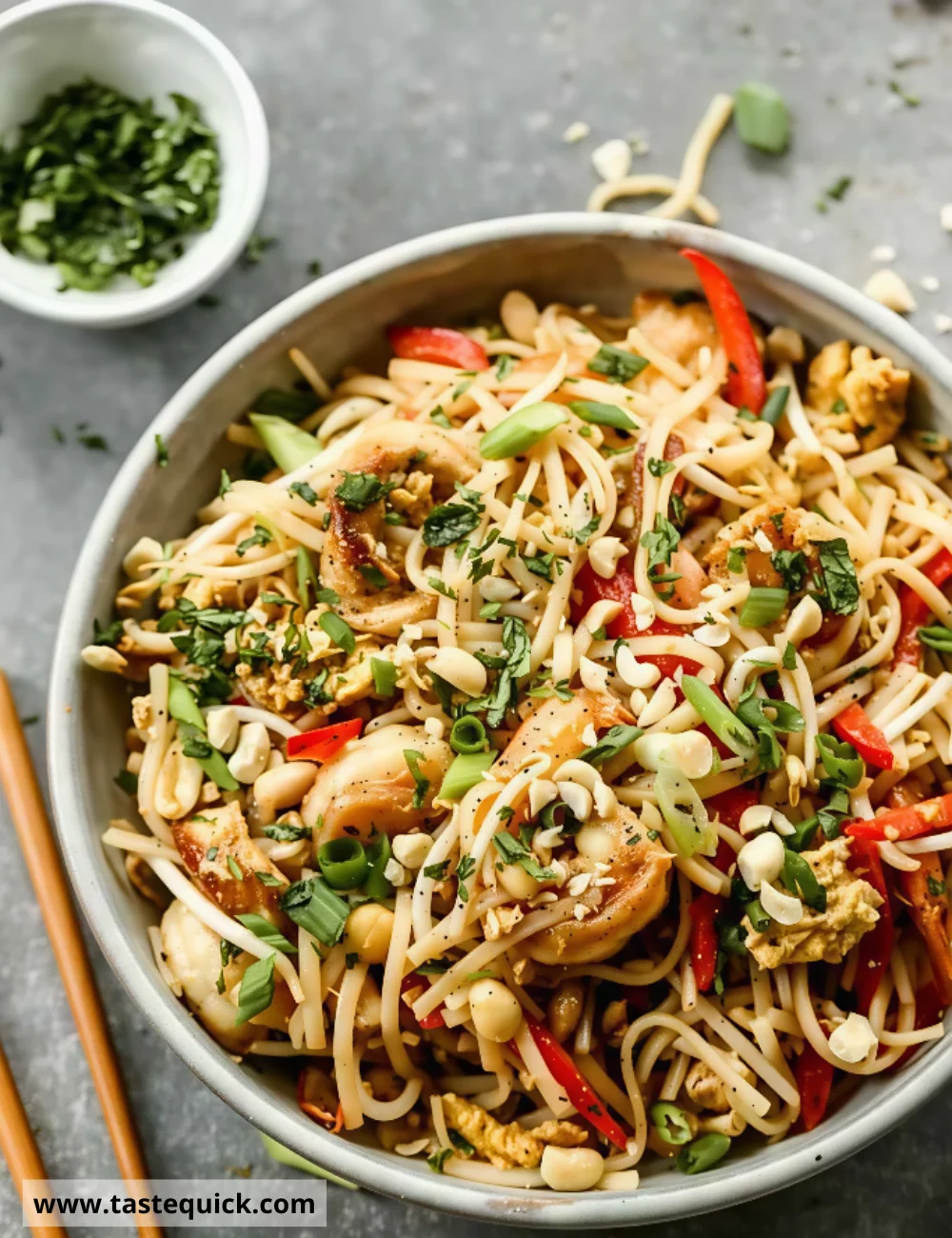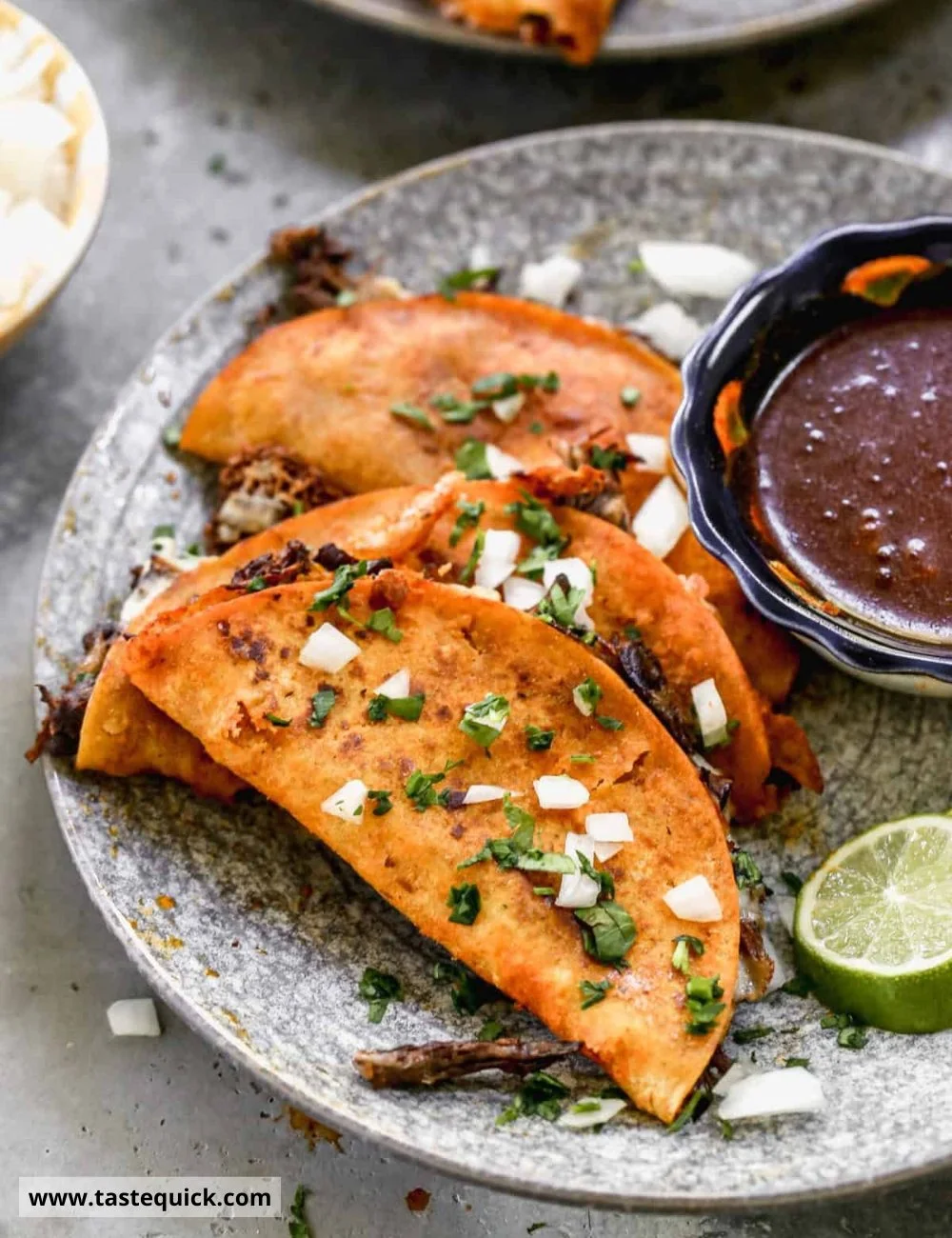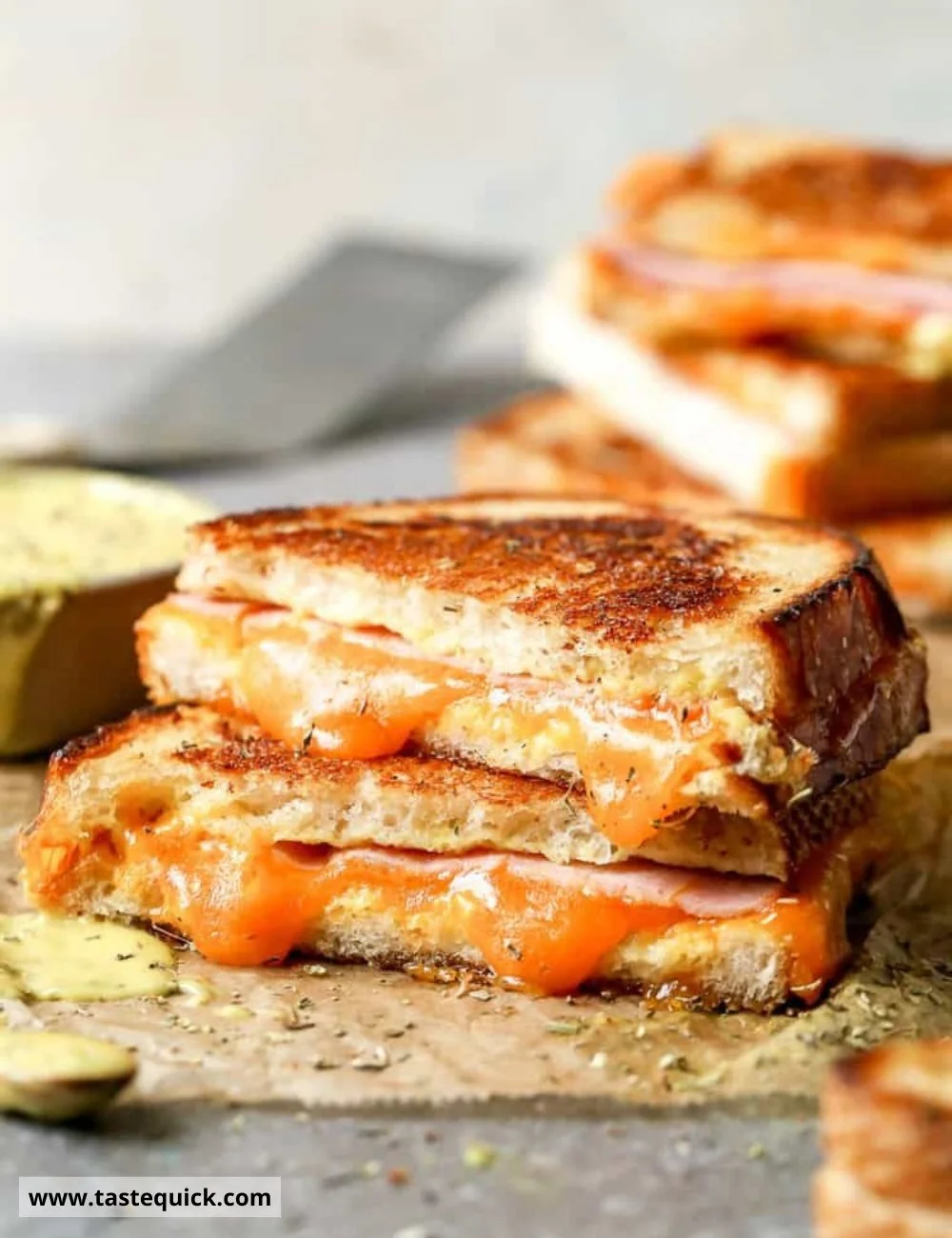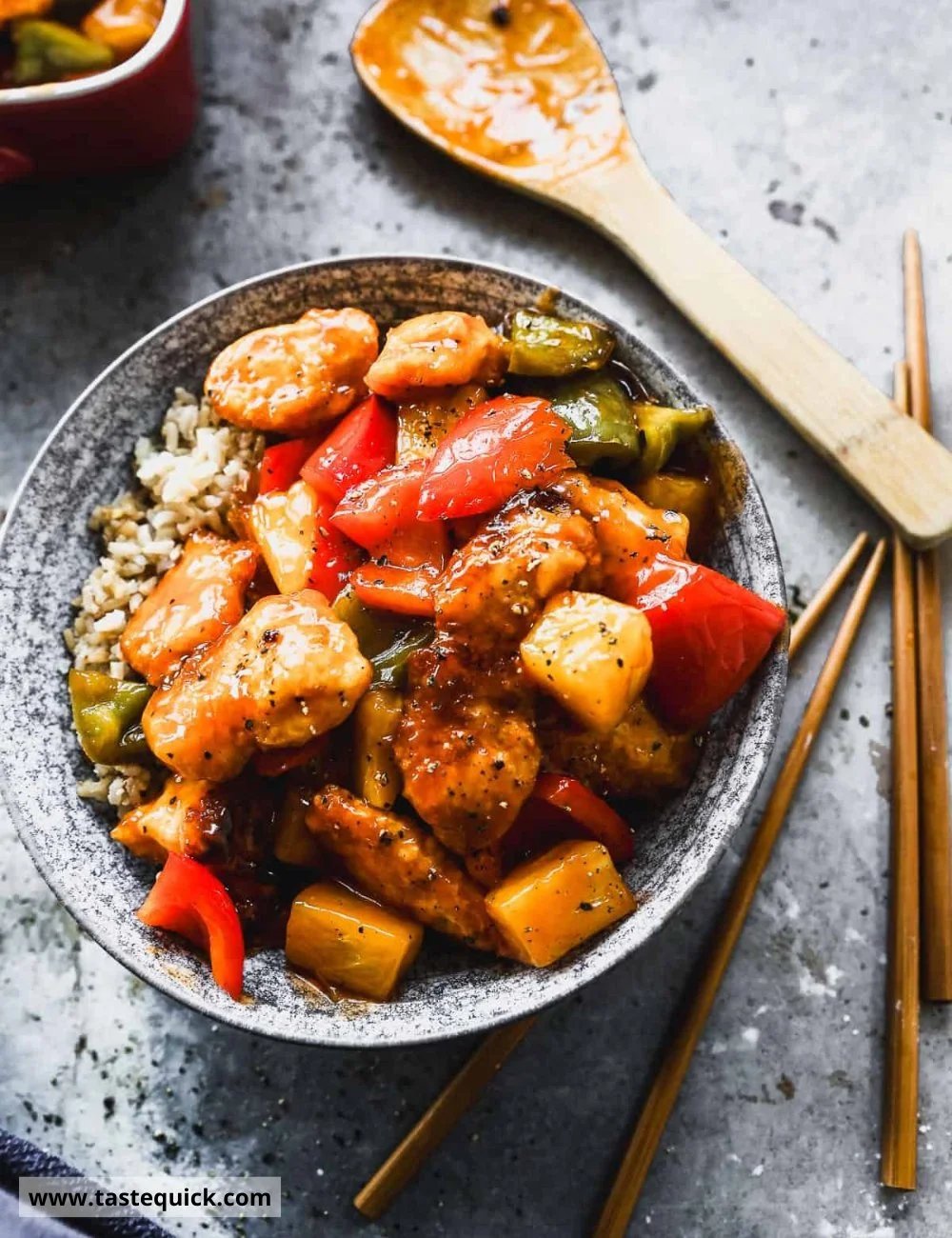Why Make This Pad Thai
This Pad Thai recipe stands out for its balance of sweet, salty, and tangy flavors, which come from the unique combination of tamarind paste, fish sauce, and sugar. It’s a versatile dish that you can customize with your choice of protein—shrimp, chicken, or tofu all work beautifully. Easy to make yet delicious enough to serve at dinner parties, this dish is sure to satisfy everyone at your table. Plus, it takes less than an hour to whip up!
Recipe Information
- Prep Time: 30 minutes
- Cook Time: 15 minutes
- Total Time: 45 minutes
- Servings: 2-3 servings
- Difficulty Level: Easy
Nutrition Information
- Calories per serving: Approximately 450
- Protein: 22 grams
- Carbohydrates: 56 grams
- Fat: 15 grams
- Fiber: 4 grams
- Sugar: 4 grams
- Sodium: 900 mg
Pad Thai is a beloved Thai stir-fried noodle dish that brings together a delightful mix of textures and flavors. With rice noodles, protein, and fresh vegetables, it’s a comforting meal that is surprisingly simple to prepare. Whether you are enjoying it on a busy weeknight or serving it at a friendly gathering, Pad Thai never fails to impress.
How to Make Pad Thai
Ingredients:
- 8 oz rice noodles
- 2 tbsp vegetable oil
- 1 cup shrimp or protein of choice
- 2 eggs
- 1 cup bean sprouts
- 1/4 cup green onions, chopped
- 1/4 cup peanuts, crushed
- 3 tbsp fish sauce
- 1 tbsp tamarind paste
- 1 tbsp sugar
- Lime wedges for serving
Directions:
Step 1: Preparation
Soak rice noodles in warm water for about 30 minutes until soft. Drain the noodles and set aside. This step ensures your noodles will be perfectly tender when cooked.
Step 2: Sautéing the Protein
In a wok or large skillet, heat the vegetable oil over medium heat. Add the shrimp (or your protein of choice) and cook until they turn pink, approximately 3-4 minutes. The oil should be hot enough to sizzle the shrimp, providing a lovely sear.
Step 3: Cooking the Eggs
Push the shrimp to one side of the pan and crack the eggs into the other side. Scramble them gently until cooked, stirring occasionally. The eggs will add richness to the dish, so don’t skip this step.
Step 4: Mixing the Noodles
Add the soaked rice noodles to the pan. Stir in the fish sauce, tamarind paste, and sugar, mixing everything well to ensure all flavors meld together. This creates the distinctive Pad Thai taste you’re looking for.
Step 5: Adding Vegetables
Add the bean sprouts and chopped green onions, stirring until all ingredients are combined and heated through. This step not only boosts the flavor but also adds a nice crunch to the dish.
Step 6: Finishing Touches
Serve your delicious Pad Thai hot, topped with crushed peanuts and lime wedges on the side. The peanuts will add texture, while a squeeze of lime will brighten up the flavors beautifully.
How to Serve Pad Thai
Serve Pad Thai in bowls lined with fresh lime wedges and a sprinkling of crushed peanuts. This dish pairs well with a light salad or some crispy spring rolls for a complete meal. It’s perfect for casual gatherings or a cozy dinner at home!
How to Store Pad Thai
If you have leftovers, store them in an airtight container in the refrigerator for up to 2 days. To reheat, simply warm it in a pan on low heat or in a microwave until heated through. The noodles may soak up some moisture during storage, so you might want to add a splash of water or a bit of oil to loosen them up.
Expert Tips for Perfect Pad Thai
- Make sure the oil is hot enough before adding your protein to achieve that delicious sear.
- Don’t overcook the noodles; they should be tender but not mushy.
- Customize the dish with your favorite vegetables, such as bell peppers or carrots.
- For a spicy kick, add a dash of chili flakes or a drizzle of sriracha before serving.
Delicious Variations
- Vegetarian Pad Thai: Replace shrimp with tofu or tempeh.
- Spicy Pad Thai: Incorporate fresh chili slices or chili paste into the mix.
- Peanut Butter Pad Thai: Mix in a tablespoon of natural peanut butter for an extra creamy texture.
Frequently Asked Questions
Can I use other types of noodles?
Absolutely! While rice noodles are traditional, you can use other types like egg noodles or even whole wheat noodles.What to do if I can’t find tamarind paste?
If tamarind paste isn’t available, a mix of lime juice and brown sugar can act as a substitute, though the flavor will be slightly different.How can I make it gluten-free?
Use gluten-free soy sauce instead of fish sauce, and ensure that your rice noodles are certified gluten-free.Can I add other vegetables?
Yes! Feel free to add vegetables like bell peppers, carrots, or zucchinis for more color and nutrition.Is Pad Thai good for meal prep?
It’s a great dish for meal prep, but make sure to add the bean sprouts fresh when serving, as they can lose their crunch when stored.
Conclusion
Pad Thai is a delightful, flavorful dish that everyone can enjoy. With a lovely mix of textures and a tantalizing taste profile, it’s bound to become a favorite in your household. So gather your ingredients, follow these simple steps, and enjoy bringing a taste of Thailand into your home! Your friends and family will surely be asking for seconds!
Print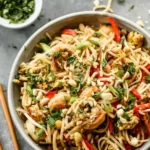
Classic Pad Thai
- Author: hannah-belssy
- Total Time: 45 minutes
- Yield: 2–3 servings 1x
- Diet: Non-Vegetarian
Description
A beloved Thai stir-fried noodle dish with a delightful mix of textures and flavors, featuring rice noodles, protein, and fresh vegetables.
Ingredients
- 8 oz rice noodles
- 2 tbsp vegetable oil
- 1 cup shrimp or protein of choice
- 2 eggs
- 1 cup bean sprouts
- 1/4 cup green onions, chopped
- 1/4 cup peanuts, crushed
- 3 tbsp fish sauce
- 1 tbsp tamarind paste
- 1 tbsp sugar
- Lime wedges for serving
Instructions
- Soak rice noodles in warm water for about 30 minutes until soft. Drain the noodles and set aside.
- In a wok or large skillet, heat the vegetable oil over medium heat. Add the shrimp (or your protein of choice) and cook until they turn pink, approximately 3-4 minutes.
- Push the shrimp to one side of the pan and crack the eggs into the other side. Scramble them gently until cooked.
- Add the soaked rice noodles to the pan. Stir in the fish sauce, tamarind paste, and sugar, mixing well.
- Add the bean sprouts and chopped green onions, stirring until all ingredients are combined and heated through.
- Serve hot, topped with crushed peanuts and lime wedges on the side.
Notes
Customize with your favorite vegetables. For a spicy kick, add chili flakes or sriracha before serving.
- Prep Time: 30 minutes
- Cook Time: 15 minutes
- Category: Main Course
- Method: Stir-frying
- Cuisine: Thai
Nutrition
- Serving Size: 1 serving
- Calories: 450
- Sugar: 4g
- Sodium: 900mg
- Fat: 15g
- Saturated Fat: 2g
- Unsaturated Fat: 5g
- Trans Fat: 0g
- Carbohydrates: 56g
- Fiber: 4g
- Protein: 22g
- Cholesterol: 120mg
